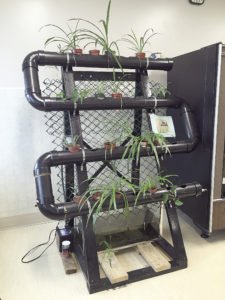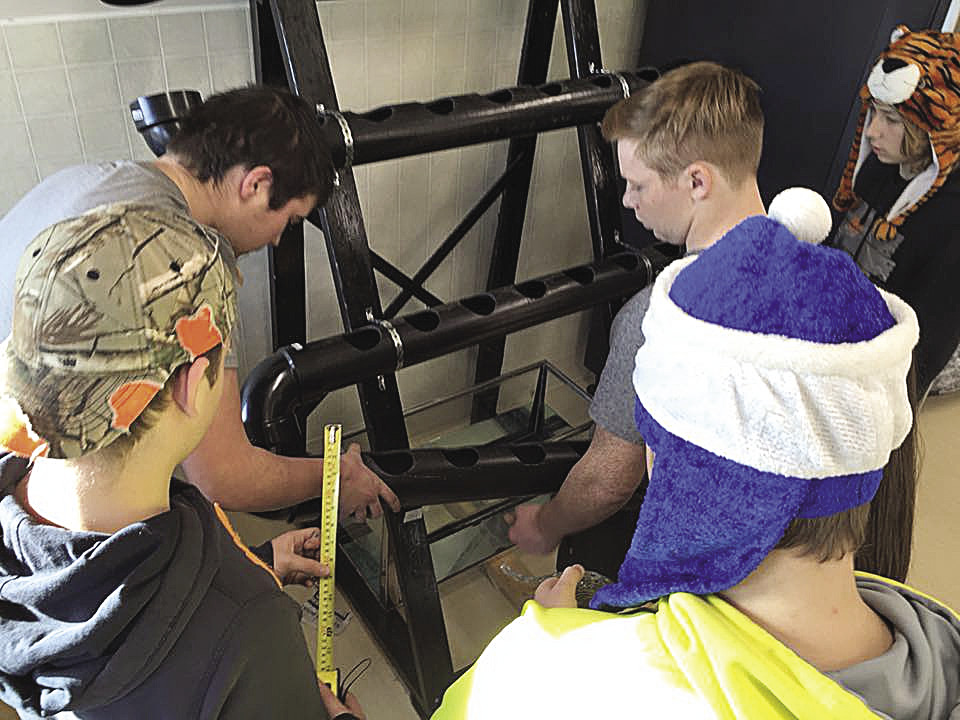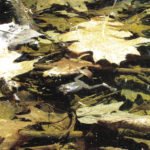Students collaborating during construction of the aquaponics system. | CHRIS DUBE
Terrace Bay—I teach an Outdoor, Experiential, Environmental Science course at the Terrace Bay High School. During a discussion on sustainable agricultural practices, composting methods and food miles, the topic of aquaponics arose. We stumbled upon aquaponics as part of the urban agricultural movement, but we didn’t know much about how it works. We decided as a class to research, design and attempt to build our own aquaponics system. Thus, our class aquaponics adventure began.
First, we started our query using a researcher’s new best friend: YouTube. We discovered that aquaponics is a hybrid term that combines hydroponics (soil-less growing of plants) and aquaculture (raising fish). The general concept is that the nutrient-rich water from the fish tank is used to water and fertilize the plants in a closed-loop ecosystem.
Thus, our “big question” developed: Can we use aquaponics to grow plants in our school sustainably, using only recycled materials? If so, what system would work best for us and why? With our very limited budget, we wanted to keep with the philosophy of reducing and reusing, re-thinking and re-purposing. Luckily, I was able to find a solar panel and a fish tank sitting in storage at the nearby elementary school. These would become integral components of our system.

We decided upon a hybrid of a few different designs to suit our particular location and materials. We found a spot in the lunchroom by a south-facing window. The spot was relatively small, so the system needed to be compact. Starting at the bottom of our system is a fish tank with minnows we purchased from our local tackle store. Adjacent, we used the south-facing solar panel to trickle charge a lawn tractor battery. This battery runs a small water pump that pushes the water to the top of the system, which is made of 4-inch, black PVC pipe connected in series. We cut 3-inch diameter holes in the pipe to hold flower pots. The water enters from the top and flows through the cascading pipes that are held in place by a wooden triangular structure, designed by the students from used two-by-fours. The water then exits back into the minnow tank via a hose on the bottom, which drops approximately 6 inches to aerate the tank for the minnows. We run the system for about 20 minutes every day.
One of my students, Alexis Ray, reflected on her experience building our system.
“I thought it was really interesting to learn how to create a well working, self-watering garden. Something I did not know was that the water from the plants is really good for minnows. I also didn’t know that bugs formed life in the tubing, and when the water goes through all the tubing they wash out and become food for the minnows. Aquaponics is a really good way to have a garden when you don’t have a lot of space or a lot of money.”
Currently, our system grows plants for teachers’ classrooms and students’ homes in an effort to green our living and work places.




